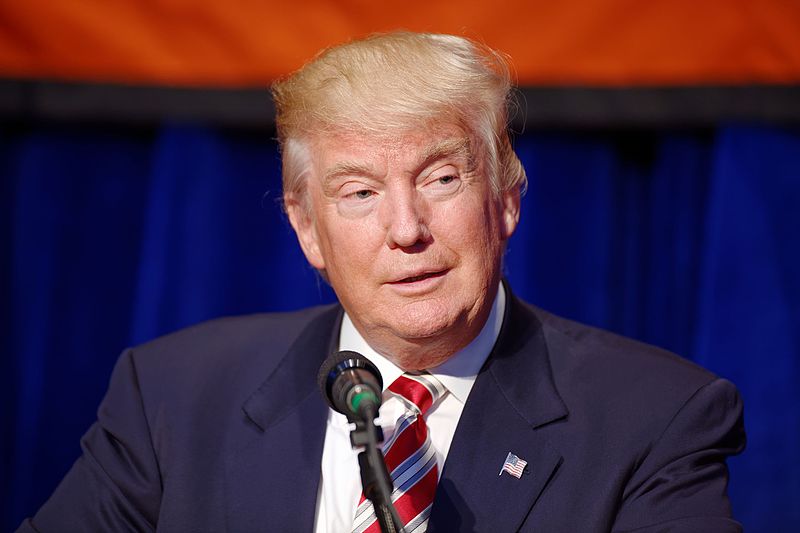Friday, July 14th 2017 — The news from Wall Street has been “Make the Markets Great Again,” with record-breaking gains since the November election.
Many experts have linked the stellar performance on Wall Street to Donald Trump’s promises to roll back regulations, reform the tax code and get a new health care law on the books. So far, very little of Trump’s policy agenda has materialized.
PERMANENT LINK: wjla.com/news/nation-
Health care is stalled in the Senate and there is little evidence to suggest Congress will pass tax reform this year and regulatory reforms are rolling in slowly. Yet the markets continue to shatter records.
As the Republicans unveiled their revised health care bill to renewed criticism, the Dow Jones closed at a record for the 24th time this year. In fact, all the major indexes were up. If the confidence on Wall Street is being driven by the hopes that Trump’s policies will go into effect, what happens if the agenda is thwarted?
In considering the impact of Trump’s campaign promises and his actual accomplishments, it’s important to remember that the markets are not the economy.
In the case of the Trump rally, economist and University of Maryland business professor Peter Morici explained that the behavior of the markets has been largely independent of the president’s political agenda.
“I think the markets have already built in that we’re not going to get much of a tax cut — certainly not this year — and we’re not going to get much in health care policy,” he explained. The reaction from Wall Street, he said, “is happening independent of Trump in the sense that he has really not implemented much in the way of policy changes.”
The fact that Trump has loosened some energy regulations and may ease up on financial regulations helps. In addition, the underlying U.S. economy overall is strong, profits are high, and corporations and small businesses are generally relieved (even euphoric) that under this administration they don’t have to worry about new regulations.
“Trump doesn’t need to execute his agenda, he just needs to do no harm. If that prevails, the U.S. market will do nicely,” Morici noted.
Where Trump’s policies are really going to count is producing real economic growth.
The Trump White House is sticking to its campaign pledge to return the United States economy to 3 percent annual GDP growth and sustain it over ten years.
For some perspective, the last time the U.S. hit 3 percent GDP, a Samsung flip-phone was the must-have new technology and wearing two layers of polo shirts was cool.
In an editorial for the Wall Street Journal, White House budget director Mick Mulvaney said the way the administration will get America back to sustained 3 percent growth is “MAGAnomics.”
“The focus of MAGAnomics is simple,” he wrote. “Grow the economy and with it the wealth of, and opportunity for, all Americans.”
Outlining MAGAnomics as a combination of tax cuts, government spending cuts, regulatory reform, infrastructure investment and new trade policies, Mulvaney concluded, “If we enact the president’s broad agenda — if MAGAnomics is allowed to work — we will have set the stage for the greatest revival of the American economy since the early 1980s.”
Virtually all long-term forecasts put U.S. economic growth at or below 2 percent for the foreseeable future. From the Congressional Budget Office (CBO) and the Federal Reserve to the International Monetary Fund (IMF), the outlook is not great.
On Thursday, Federal Reserve chair Janet Yellen told lawmakers that the 3 percent goal would be “very hard,” but some of the administration’s policies, like tax reform, “could have a favorable impact if appropriately done.”
“It is challenging to move productivity growth up that much, but I hope that Congress and the administration will focus on changes that will succeed in accomplishing that,” Yellen said.
Senior research fellow at George Mason University’s Mercatus Center, Veronique de Rugy, is skeptical that the administration can meet its 3 percent goal, but said that sustained growth will depend on Trump’s economic policy reforms being put in place.
“It’s unrealistic to think that these reforms alone are going to trigger sustained 3 percent growth over the long-term,” she said. “The condition of some increase in economic growth is if and only if they manage to put in place a real tax reform agenda — and that’s a big if, in my opinion.”
Because of the dynamic in Congress, which has already thwarted Trump’s agenda, de Rugy suspects they will most likely get a tax cut, but nothing close to what the president has promised. Though a tax break could end up having a positive effect, she said, “it’s nothing like what they are promising everyone.”
Trump put out a very broad statement on his tax reform policy in April, promising to simplify the tax code and cut rates across the board for individuals of all income levels, business and corporations. The administration has promised a more detailed plan will be released to the Congress sometime after the August recess.
Analysts looking at the general plan have raised concerns that the cuts will disproportionately benefit the highest-income earners. The non-partisan Tax Policy Center found that the proposal could also blow a big hole in government revenue, $7.2 trillion in additional federal debt over the first decade.
Whether across the board tax breaks will actually spur economic growth depends on many factors, there is no silver bullet. But just the promise of future tax cuts, looser regulations and large infrastructure investments has left businesses, financial markets, manufacturers and con
As long as growth hovers around 2 percent, markets are likely to remain confident, Morici said. “In reality, it’s political obstacles that are holding up American investment.”
There is a point where the post-election euphoria, the confidence will collapse. If the anticipated, and possibly hyped-up, benefits of the Trump presidency fail to materialize and the U.S. economy slows to 1.9 percent or less, as some forecasters expect, that could end the party.
“As long as there’s still the hope that tax reform is going to happen within within a reasonably short time-frame, the markets will be optimistic,” de Rugy noted. “Once we start sliding into 2018 and nothing is happening, that’s, I think, when we’re going to start seeing maybe this bubble burst.”






